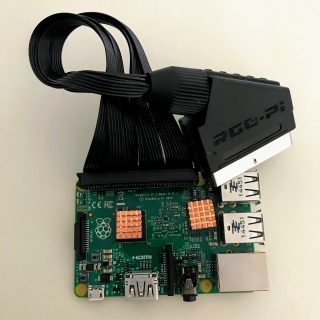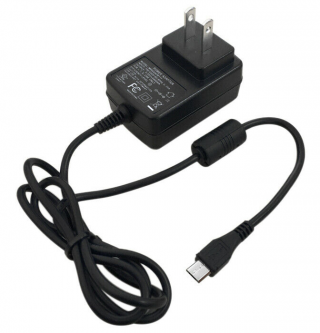Difference between revisions of "RGB-Pi SCART Installation"
m |
(Marked this version for translation) |
||
| (15 intermediate revisions by 2 users not shown) | |||
| Line 1: | Line 1: | ||
| − | ''' | + | <languages/> |
| + | <translate> | ||
| + | <!--T:1--> | ||
| + | '''Steps''' | ||
| + | <!--T:2--> | ||
{| | {| | ||
| − | |||
|- | |- | ||
| − | |1. Connect the cable | + | |1. Connect the cable to the GPIO. The cable must be facing to the outside of the Raspberry Pi |
| + | [[File:cable.jpg|320px|border]] | ||
|- | |- | ||
| − | |2. | + | |2. We recommend the use of [https://rover.ebay.com/rover/0/0/0?mpre=https%3A%2F%2Fwww.ebay.com%2Fulk%2Fitm%2F254282109713 this power supply ]as the only one with RGB-Pi approval to avoid undervoltages and slowdowns because supply 5.25v, If you are from UE, need one plug converter too. |
| + | [[File:Psu2.png|320px|border]] | ||
|- | |- | ||
| − | |3. | + | |3. That's all! For instructions on how to install RGB-Pi OS, please visit [[Special:MyLanguage/OS_Installation|OS Installation]] |
| − | |||
| − | |||
| − | |||
| − | |||
| − | |||
| − | |||
|- | |- | ||
|} | |} | ||
| + | </translate> | ||
Latest revision as of 19:14, 18 June 2021
Steps
| 1. Connect the cable to the GPIO. The cable must be facing to the outside of the Raspberry Pi |
| 2. We recommend the use of this power supply as the only one with RGB-Pi approval to avoid undervoltages and slowdowns because supply 5.25v, If you are from UE, need one plug converter too. |
| 3. That's all! For instructions on how to install RGB-Pi OS, please visit OS Installation |

